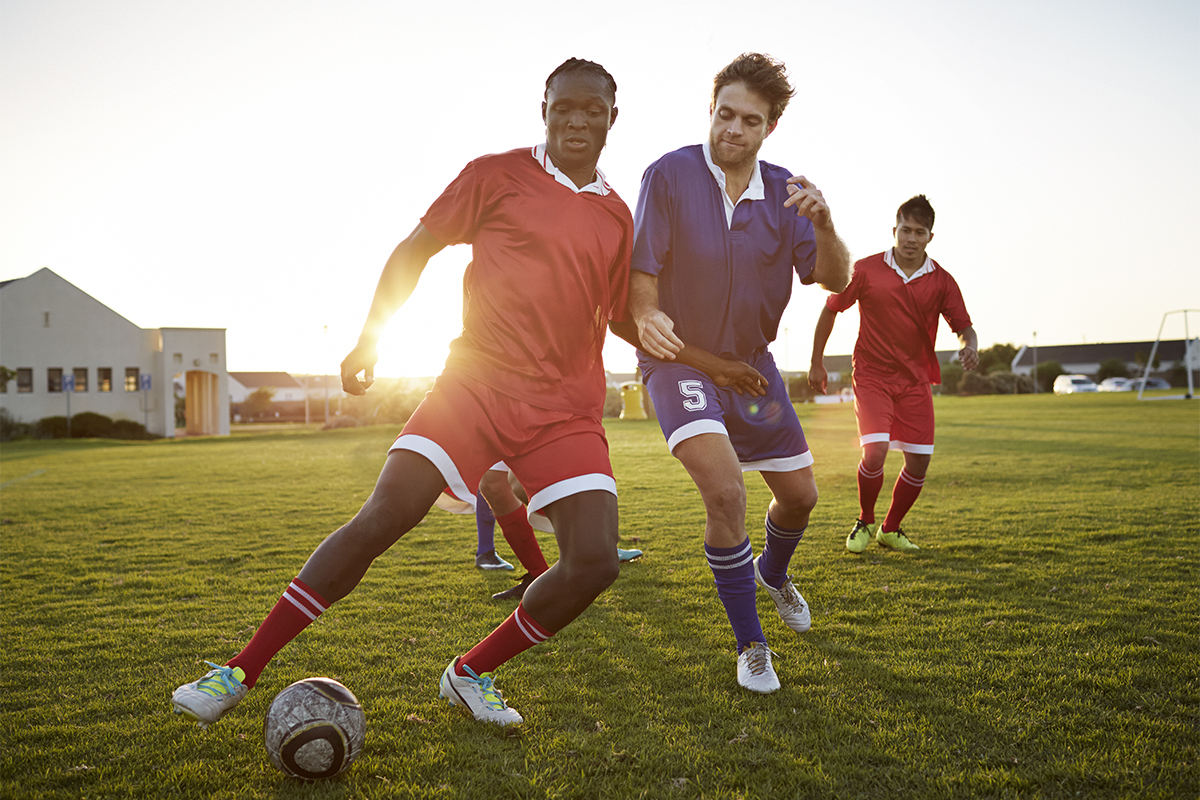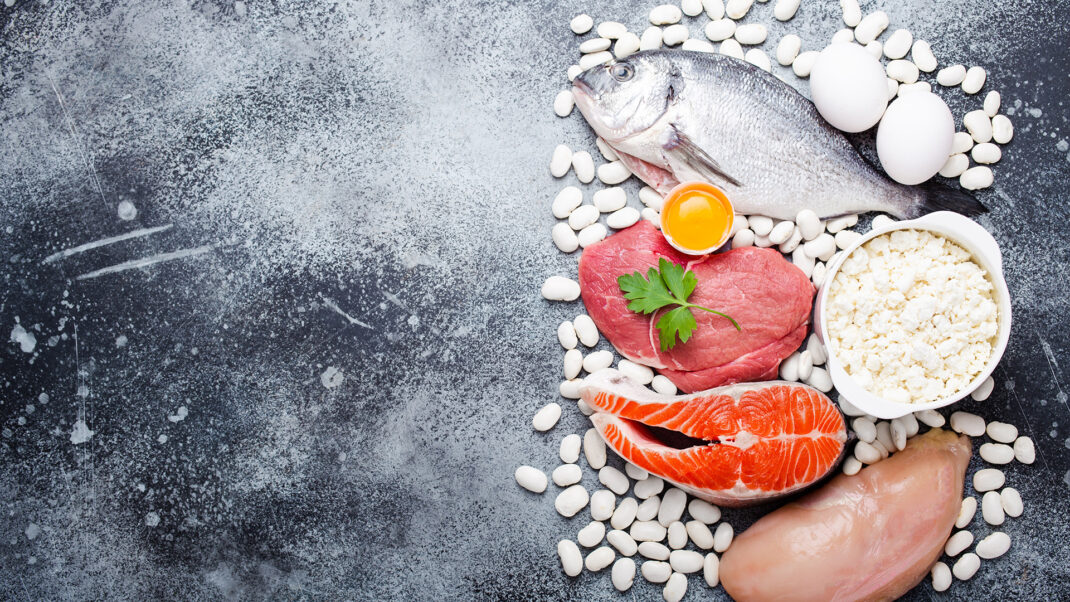Fueling Masters Athletes for Performance and Health
To serve the unique needs of this growing population of highly motivated adults, wellness professionals must adapt not only training plans but also basic nutrition.

Athletes over the age of 35, or masters athletes, are becoming an increasingly large segment of the athletic population, representing a potential windfall of opportunity for wellness professionals. For example, between 2015 and 2019, participation at the USA National Masters Weightlifting Championships nearly tripled. The largest group is ages 35–44. Masters athletes in this sport are typically affluent (earning more than $100,000 a year), and they work with a coach (Huebner et al. 2020). It stands to reason that learning the specific needs of this growing population—whatever their chosen modality—offers the potential to develop a very lucrative specialty.
Of course, coaches, trainers and nutrition professionals cannot use the same programs and techniques with a 40-year-old athlete as with a 20-year-old athlete. Part of the opportunity to work with this population is recognizing and adapting to the changes brought on physically through age. Masters athletes experience reductions in muscle mass and strength, for example, and may face additional challenges such as chronic health conditions.
Although physical activity has a tremendous impact on reducing the adverse physiological effects of aging, it’s only part of the equation. Here, we explore how a targeted nutritional program can support physical activity of masters athletes and improve their quality and quantity of life as they age.
Common Physiological Changes in Masters Athletes
Physiological changes brought on by aging present a significant consideration for working with older athletes. Some changes that will impact older adults include
- decreased metabolic rate
- decreased muscle mass (sarcopenia)
- increased body fat
- decreased bone turnover
- increased oxidative stress
- increased inflammation
- decreased glucose metabolism (Strasser et al. 2021).
These physiological changes will result in an individual who is declining in muscle strength (dynapenia) and who is more prone to the chronic (noncommunicable) diseases associated with aging. The good news is that you can help clients reduce all these adverse changes with proper physical activity and targeted nutrition—and positively affect their athletic performance (Strasser et al. 2021).
See also: Power Training for Older Clients
The Basics of Masters Athletes Nutrition

Making sure people get enough protein in their diet will help them ward off the effects of age-related muscle loss.
Age-related alterations in how the body metabolizes and, in some cases, synthesizes, nutrients will alter its nutritional needs. This change becomes even more important for people who are athletes since they have additional nutritional considerations and demands. Here are noteworthy dietary considerations for anyone working with masters athletes.
Calories
In the general population, the loss of muscle mass reduces energy (caloric) requirements as age increases. However, exercise will increase this requirement, so masters athletes must find an appropriate balance to ensure they can maintain muscle mass and performance capabilities as they age (Strasser et al. 2021). See “Caloric Needs Calculator,” below, for some formulas that may provide a good starting point.
Protein, Amino Acids and Omega-3s
Making sure people get enough protein in their diet will help them ward off the effects of age-related muscle loss. Some things to keep in mind:
Protein. Recommendations of at least 30 grams of protein per meal and 1.5–1.6 g of protein per kilogram of body weight per day are suggested to ensure adequate protein for most athletes. The minimum protein consumption should be 1.2 g/kg BW daily. These protein requirements can be even higher (1.6–2.4 g/kg BW) in times of caloric deficit (Strasser et al. 2021).
Amino acids. When it comes to protein, quality matters, too. It’s important to ensure older athletes are taking in all the essential amino acids to maximize muscle gains during recovery. This is a particular concern for vegan and vegetarian athletes who may need guidance to get the full complement of essential amino acids each day. In particular, the essential amino acid leucine plays a key role in muscle protein synthesis. Taking in at least 3 g of leucine daily will help to stave off sarcopenia.
Omega-3 fatty acids. Consuming omega-3 fatty acids may be another way to increase muscle protein synthesis and positively impact the impaired ability to build muscle seen with aging (Strasser et al. 2021).
Vitamin D
Vitamin D deficiency has been identified in many athletes in general but in older athletes specifically. One study cites that vitamin D deficiency has been noted in more than half of athletes living in northern regions (Farrokhyar et al. 2015). One reason for this could be decreased vitamin D synthesis due to aging. This would be more noticeable in northern locations that see less sunlight (Strasser et al. 2021).
The impact here is the potential reduction in immune function and reduced ability to control the effects of inflammation. One study suggests that protein, essential amino acids, vitamin D supplementation and resistance training helped reduce inflammation and the consequences of sarcopenia in older adults (Peake, Nosaka & Suzuki 2005). Have your clients collaborate with their primary physician or refer them to a registered dietary professional to get a vitamin D workup.
Micronutrients
Other micronutrients that become more important with age are chromium, magnesium and iron.
Chromium. This mineral is important in glucose regulation. It will decrease in need from 35 to 30 micrograms daily beginning at the age of 50.
Iron. Iron is a particularly important nutrient for premenopausal female athletes, who need at least 18 milligrams daily. This amount reduces to 8 mg postmenopause, which happens to be the same requirement as for men of all ages.
Magnesium. Magnesium, important for energy production, can be lost in the diet if the person has issues with malnutrition or malabsorption, has certain chronic diseases or is taking prescription diuretics. In these cases, the magnesium must be replaced.
Source: Fink & Mikesky 2018.
Probiotics
Years of poor eating habits, the physiological impact of aging on the gut, and the potential impact of medications may alter the microbiome in older adults. This may make the masters athlete more subject to malabsorption and digestive issues.
In addition to dietary intervention and possible supplementation with probiotics, one suggestion would be to remove any potential stressors that could be detrimental to gut health (Strasser et al. 2021). As with all dietary supplements, be sure to mind your scope of practice and work with qualified medical and allied health professionals when advising your client.
Hydration
Aging brings on some significant hormonal changes that can impact hydration—specifically, decreases in vasopressin and aldosterone. Additionally, the underconsumption of fluids, the impact of certain medications and the clinical considerations from other health conditions can increase the possibility of dehydration with an older adult. Considering these factors, it becomes important for those working with masters athletes to have a clear hydration plan laid out.
Generally, women will need approximately 2.7 liters of fluid per day, and men will need about 3.7 L per day. More will be required to replace water lost during exercise: For every 1 pound of weight loss during training, the athlete should drink approximately 0.5 L of fluid (Fink & Mikesky 2018).
See also: Training Techniques for High-Performance Older Athletes
Expanding Your Knowledge and Network for Masters Athletes

A specialized program that considers the masters athlete’s nutritional needs and concerns can help them perform at their best.
A masters athlete needs to have a trained interprofessional team working together to help them achieve their goals. Increased interest in competitive sports for older athletes has presented an opportunity for healthcare providers, trainers, coaches and nutrition professionals. As you see increases in the complexity of the training and dietary considerations of your masters clients, you must either educate yourself or develop a referral network of those trained to work with older athletes.
A well-designed training plan that considers the athlete’s physical presentation, specific athletic needs and personalized nutritional concerns can help the athlete perform at their best as they age.
Caloric Needs Calculator
To calculate a masters athlete’s caloric needs, use a formula to determine the resting energy expenditure (REE), then adjust it based upon activity level. There are several good REE formulas. For example:
Males: REE = (11.6 3 body weight [kg]) + 879
Females: REE = (8.73 body weight [kg]) + 829
Once the REE is calculated, it can be multiplied by an activity factor ranging from 1.6 for sedentary individuals to 2.4 for highly competitive athletes training multiple times per day (Fink & Mikesky 2018).
This will give you a good starting point for daily caloric needs. To personalize the results, have the athlete track progress of performance, recovery, weight and any other notable changes for at least 3 weeks before adjusting calories up or down.
References
Farrokhyar, F., et al. 2015. Prevalence of vitamin D inadequacy in athletes: A systematic-review and meta-analysis. Sports Medicine, 45 (3), 365–78.
Fink, H.H., & Mikesky, A.E. 2018. Practical Applications in Sports Nutrition. (5th ed.). Burlington, MA: Jones & Bartlett Learning.
Huebner, M., et al. 2020. The masters athlete in Olympic weightlifting: Training, lifestyle, health challenges, and gender differences. PLOS ONE, 16 (2), e0247110.
Peake, J., Nosaka, K., & Suzuki, K. 2005. Characterization of inflammatory responses to eccentric exercise in humans. Exercise Immunology Review, 11, 64–85.
Strasser, B., et al. 2021. Nutrition for older athletes: Focus on sex-differences. Nutrients, 13 (5), 1409.
Peter Nickless, PhD, DC
Peter J. Nickless, PhD, DC, holds advanced degrees in chiropractic, biomedical informatics, nutrition and business. He has practiced chiropractic in numerous settings, specialized in sports performance and general wellness, and served as a college educator, including in his current role as dean at Northeast College of Health Sciences in Seneca Falls, NY.




